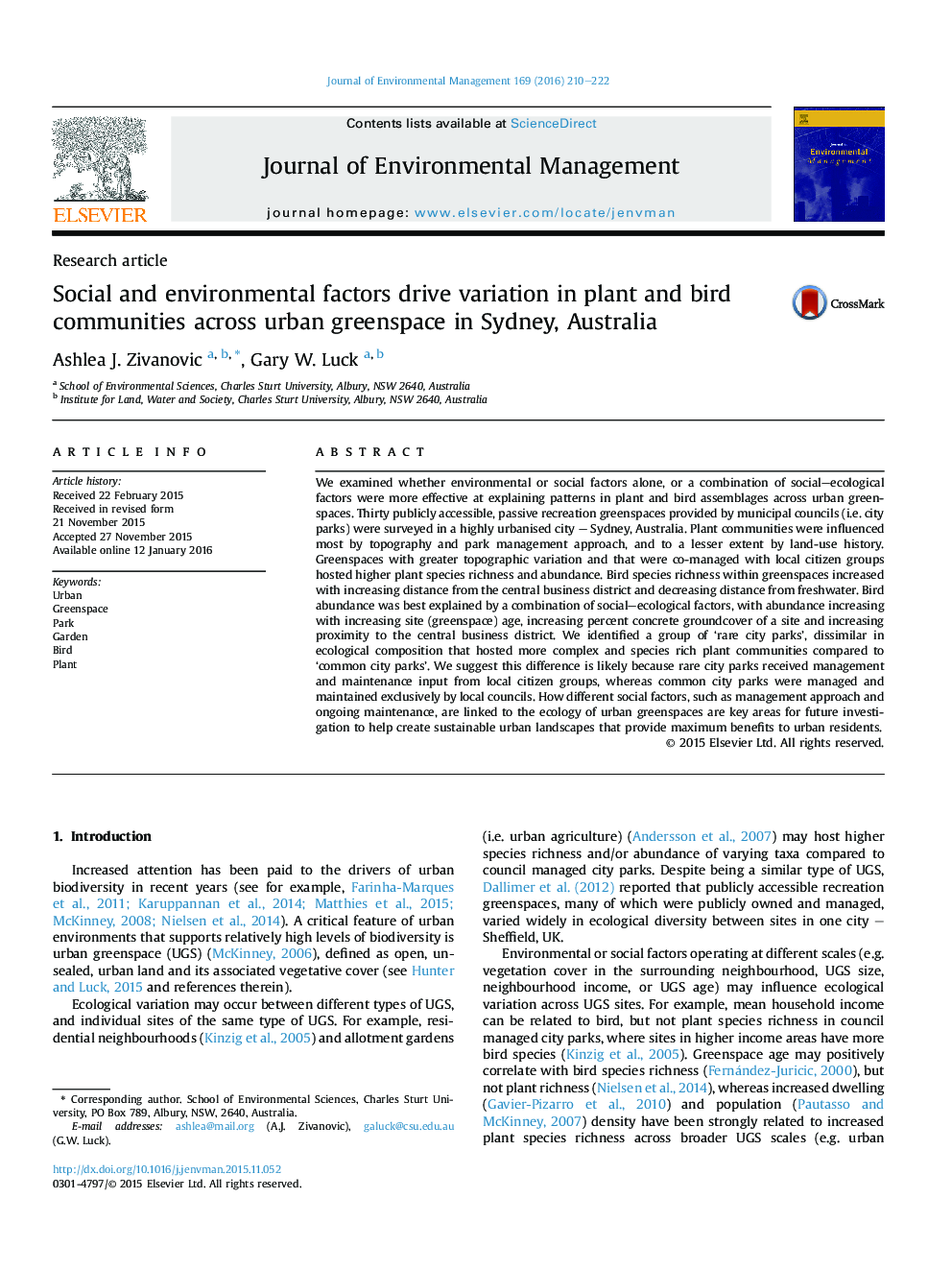| Article ID | Journal | Published Year | Pages | File Type |
|---|---|---|---|---|
| 1055452 | Journal of Environmental Management | 2016 | 13 Pages |
•Ecological characteristics of urban greenspaces varied substantially.•Topography and management influenced variation in plant communities.•Bird species richness was higher in greenspaces further from the city centre.•Bird abundance was higher in older greenspaces that were closer to the city centre.
We examined whether environmental or social factors alone, or a combination of social–ecological factors were more effective at explaining patterns in plant and bird assemblages across urban greenspaces. Thirty publicly accessible, passive recreation greenspaces provided by municipal councils (i.e. city parks) were surveyed in a highly urbanised city – Sydney, Australia. Plant communities were influenced most by topography and park management approach, and to a lesser extent by land-use history. Greenspaces with greater topographic variation and that were co-managed with local citizen groups hosted higher plant species richness and abundance. Bird species richness within greenspaces increased with increasing distance from the central business district and decreasing distance from freshwater. Bird abundance was best explained by a combination of social–ecological factors, with abundance increasing with increasing site (greenspace) age, increasing percent concrete groundcover of a site and increasing proximity to the central business district. We identified a group of ‘rare city parks’, dissimilar in ecological composition that hosted more complex and species rich plant communities compared to ‘common city parks’. We suggest this difference is likely because rare city parks received management and maintenance input from local citizen groups, whereas common city parks were managed and maintained exclusively by local councils. How different social factors, such as management approach and ongoing maintenance, are linked to the ecology of urban greenspaces are key areas for future investigation to help create sustainable urban landscapes that provide maximum benefits to urban residents.
